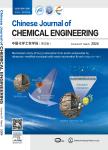Numerical study of the deep removal of R134a from non-condensable gas mixture by cryogenic condensation and de-sublimation
作者机构:Department of Refrigeration and Cryogenic EngineeringSchool of Energy and Power EngineeringXi’an Jiaotong UniversityXi’an 710049China
出 版 物:《Chinese Journal of Chemical Engineering》 (中国化学工程学报(英文版))
年 卷 期:2023年第61卷第9期
页 面:180-191页
核心收录:
学科分类:080705[工学-制冷及低温工程] 08[工学] 0807[工学-动力工程及工程热物理]
基 金:funded by the National Natural Science Foundation of China(52076159)
主 题:Numerical simulation Greenhouse gas Condensation De-sublimation Vapor deep removal Non-condensable gas
摘 要:Nowadays,the limits on greenhouse gas emissions are becoming increasingly *** present research,a two-dimensional numerical model was established to simulate the deep removal of 1,1,1,2-tetrafluoroethane(R134a)from the non-condensable gas(NCG)mixture by cryogenic condensation and *** wall condensation method was compiled into the Fluent software to calculate the condensation of R134a from the gas ***,the saturated thermodynamic properties of R134a under its triple point were extrapolated by the equation of *** simulation of the steam condensation with NCG was conducted to verify the validity of the model,the results matched well with the experimental ***,the condensation characteristics of R134a with NCG and the thermodynamic parameters affecting condensation were *** results show that the section with relatively higher removal efficiency is usually near the *** cold wall temperature has a great influence on the R134a removal performance,e.g.,a 15 K reduction of the wall temperature brings a reduction in the outlet R134a molar fraction by 85.43%.The effect of changing mass flow rate on R134a removal is mainly reflected at the outlet,where an increase in mass flow rate of 12.6% can aggravate the outlet molar fraction to 210.3% of the *** research can provide a valuable reference for the simulation of the deep removal of various low-concentration gas using condensation and de-sublimation methods.



